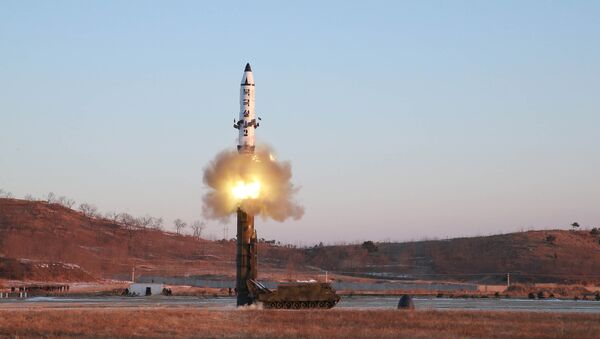According to the Ministry of Defense of the Republic of Korea, the missile was launched from Sinpo in the province of North Pyongan using a stationary launcher at an angle of 93 degrees at a maximum altitude of 189 kilometers. It flew 66 kilometers toward the Sea of Japan.
Talking about this recent launch, the professor said that although the command of the US Navy and the Ministry of Defense of the Republic of Korea said that it was a Pukykson-2 (KN-15), such a conclusion may have been hasty.
“We cannot judge from the short range of the flight that the launch was unsuccessful without knowing exactly what kind of missile was launched,” Dongyeop said.
The expert said that this launch seemed similar to the first pilot launch aimed at testing features and gathering information at the initial stage of creating a new type of missile.
However, the professor noted that if it was a Pukykson-2, then the launch was really an unsuccessful one.
He further said that he does not exclude the possibility that the launch was an experiment because after the Pukykson-2 was launched, Pyongyang announced that it intends to switch from liquid fuel to solid fuel.
“On the other hand, we do not have enough information to conclude that the launch was deliberately done with a short range in order to gather certain information. Only after seeing the official report of the DPRK tomorrow, we could draw accurate conclusions,” Dongyeop said.
Cheong Seong-Chang, director of the department of unification strategy studies at Sejong Institute said, “Today's missile launch ahead of the talks between the US and China only demonstrated that regardless of the outcome of the US-China talks, Pyongyang intends to continue developing its nuclear missile program and China has no political influence on that.”
According to Chang, after the talks between China and the US, the DPRK will speed up its missile program or carry out a sixth nuclear test.
“The US will do its utmost to resist a demonstration of force on part of the DPRK,” the director said.
He added that there is also a high probability that in the course of the talks, China believing that Pyongyang has not yet crossed the red line will on the one hand partially accept tougher sanctions against the DPRK, but on the other, suggest starting a dialogue between Washington and Pyongyang.




